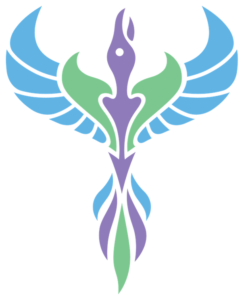Archive for June 2016
Healthful Gardening
Gardening should be equal parts happy, health plants and happy, healthy you! The gardening season brings people out of their winter skin and for this we are grateful at Community Chiropractic and Acupuncture. Chiropractic and gardening are symbiotic: we often advise people to get moving for the sake of their health and this is exactly what gardening does. On the other side of the coin, many of the motions involved in gardening can lend strain to the body, especially the spine.
Here are some back-saving tips to help you enjoy gardening season without ending up sore at the end of the day.
- Warm up by stretching: Let us help you develop a 5 minute (or less) routine for the shoulders, back and hips that will keep you limber against the twisting and bending movements that are so frequent. Gardening is already a ritualistic endeavor to many; adding in stretching to the ritual will enrich the experience.
- Take frequent breaks: Kneeling in one patch pf the garden for an extended period of time will allow muscles to tighten and the spine to stiffen. If you can, take a break every now and then to admire your work and hydrate, especially with the warm weather. Mixing up your tasks is a great way to keep on the move.
- Gardening often requires heavy lifting, so be sure to lift properly. It can never be said enough: lift with the legs, not the back.
At our office in Brooklyn, we would like to see everyone enjoy a productive, pain-free gardening season. To this end, we can identify and correct subluxation that may be contributing to pain or stress to one part of the body. If you are already suffering from injury, we can speed the healing process with healing modalities that include acupuncture and hands on treatment of the tissues and ligaments.
Call our office in Park Slope at (718) 398-3100.
Dr. Karen Thomas, D.C.
The Core of the Issue
Many people subscribe to the idea that the core is just an ambiguous muscle in the middle of the body, when in reality it is so much more. The core is a system of muscles that work together to influence almost every move your body makes, excluding those of the limbs. This makes the core important, but it also means that working out the core properly is important to. For people concerned with using their core to improve the condition of their back, we need to look at the core differently than someone who is looking to get “ripped abs.”
The core can be used as a force producer but this is, in all reality, secondary to its nature. Exercises like crunches strengthen the abs and make the stomach powerful at iniating movement. So…try twisting crunches instead! For people who want to use the core to add support to the vertebrae and muscles of the lower back, we want the core to be a prime stabilizer: using exercises such as planks, side planks, bridges and deadlifts strengthens the core holistically creating a powerful, injury resistant center of the body. This helps to bear some of the burden that is placed on the lower back.
The core as a stabilizer is an excellent idea for people looking to rehabilitate injury or prevent one from ever happening again. At Community Chiropractic & Acupuncture, we urge you not to start an indiscriminate plan for “strengthening the core,” without consulting an expert first. While internet blogs and fitness magazines are good (albeit inconsistent) places to get information, our office offers you a personalized evaluation and health plan.
Dr. Karen Thomas, D.C.
Pelvic Tilting and Hip Bridges
A more aerobic lifestyle may be the way to a life free of back pain. Swimming, walking and running are great ways to add movement into your life that stops muscles from atrophying and promotes a stronger set of muscles that will protect the longevity of your spine.
But reducing the amount of time spent in a chair is only the tip of the iceberg. Here are some simple stretches you can do that won’t cost you a thing, but will increase your well-being greatly.
Pelvic tilting: strengthening the transverse abdominus, a key core muscle that will help improve core stability.
- Lay down on your back
- Knees bent, hip-width apart
- Right hand underneath curve in your back
- Press curve of your lower back into the floor (onto your hand)
- Hold 5 seconds then release, repeat 10 times.
Hip bridges: strengthening abdominals and transverse abdominus
- Start in same position: on back, with knees bent at hip-width
- Lift hips until you achieve a straight line between knees and shoulders
- Hold for 5 seconds
- Slowly reverse motion.
- Repeat 5-10 times.
A key way to make your back less vulnerable to injury is to strengthen the core muscles. At your Park Slope Chiropractor, we emphasize core stability to improve spinal longevity. Using simple stretches for short amounts of time every day is a great way to achieve this.
Dr. Karen Thomas, D.C.
Getting the Right Night’s Sleep
When attempting to sleep, most of us follow the same adage: put yourself in the most comfortable position. Unfortunately, not all sleeping postures ar made equal and spending a night in a bad position can lead to poor circulation, neck and back pain, increased tension and headaches. Furthermore, a healthy nights sleep encompasses a whole range of conditions that need to be just right to get you the full refresh.
Improving your sleep conditions could mean chucking out your old, unsupportive mattress and upgrading your pillows, but this is not a financial option for everyone. Here are ways you can immediately improve your sleeping posture to start waking up refreshed rather than refried:
1. Try to avoid sleeping on your stomach. If you must, use a pillow under the stomach to avoid letting your stomach sink into the bed. Changing your sleep position is difficult, as it won’t feel natural at first, but given enough time, you can start sleeping on your side or back with no problems.
2. Use pillows properly: your head should not be resting with your neck cricked up or down. This is a great way to wake up with a stiff neck and a headache. Instead, your pillow should support your head while allowing it to remain parallel with the rest of the spine. Pillows can also be used as props: if you sleep on your back, stick one underneath your knees. You can even use pillows to help you stay in the same sleeping position by propping them behind you or on your sides to prevent you from rolling onto your back in the night.
3. Bed time should be a ritual: treat it as such. Cut out the electronics before bed, as they can suppress melatonin production. Instead, have a bath or wash your face. Gentle stretching is another a great thing to do before bed. A spoon of honey in a sleepytime tea is a great way to relax.
If bad sleep patterns have wrapped a vice around your life, call our office in Brooklyn to get the help you need to fall asleep. Acupuncture and chiropractic are both great at helping you relax, and we can have a serious discussion about what your posture, nutrition and exercise habits that could be holding you back from a restful night’s sleep.
We can be reached at our office in Brooklyn at (718) 398-3100.
Dr. Karen Thomas, D.C.
Posture at the Computer
How do you sit at work? Do you heed conventional wisdom and “sit up straight,” or are you right now leaning toward the screen as you read, with back rounded and the head casting disproportionate pressure on the neck and shoulder muscles, asking them to compensate? Even if you immediately straightened up upon seeing the word posture, chances are you will be slouched down or slumped forward five minutes after you have finished reading. This plays on the tendency of humans toward laziness: sitting is the most conducive position to poor posture.
- Head facing straight forward, centered over the spine. If needs be, adjust the height of your monitor to encourage this position.
- Back straight with buttocks touch the back of the chair and your shoulders back in a relaxed position.
- If possible, place a pillow in the back of the chair to encourage the lordotic curve.
- Weight of torso distributed evenly between the hips (not leaning to one side).
- Legs at 90 degrees or slightly higher.
- Feet rested flat on the floor without too much pressure being pressed through them.
As you work in front of the computer for hours at a time, you are encouraging muscular imbalance and poor curvature. This can leave you with muscle strain, headaches and back pain. At the risk of sounding like a broken record, I believe a reminder of good posture is always in order. Try to remind yourself of this position as often as possible, especially when you catch yourself slumping.
For help on posturing throughout the day, call our office in Park Slope at (718) 398-3100
Dr. Karen Thomas, D.C.
Stretch like this Stork…
…Well, maybe not just like it. But it is important to remember to stretch on the go. As you pass through each phase of your daily waking life, it is important to remember to keep your muscles moving so that tension does not accumulate. Tension of the muscles and stress/anxiety are inextricably linked in both directions so managing one will help you manage the other. When it comes to adding more stretching into your life, the key is repetition. Instill the thirst for stretching and your body and brain will reward you.
Those of us who spend significant portions of the day in an office chair are the most at risk for energy stangation, muscle tension and spinal degradation. Fight back against this damaging cycle by setting a timer for the top of every hour and taking a break from the chair to stretch it out: you don’t even have to get up.
Step 1: Shake your shoulders out. Feel how tightly wound you were after 2 hours of intense computer work? This is how much tension immediately leaves your body when you shake your shoulders.
Step 2: Treat your neck to a bit of flexion and extension, moving your chin down toward chest and up toward the sky. Gently move your ears down to each shoulder until you feel a decent stretch in the opposing side of the neck.
Step 3: Reach for the sky with all your might. Clasp your hands together with palms facing outward and extend your arms upward. Repeat this stretch in front of yourself.
Step 4: Place one leg over the other and gently twist your body in the opposing direction.
Together, these stretches take under 3 minutes out of a work hour. The reward in productivity should be enough to convince your boss. The more you can remember to do them, the better the reward. At your Park Slope Chiropractor, we are all about combatting tension. Call our office to find out ways to break the cycles of stagnation that we all inevitably fall victim to.
Dr. Karen Thomas, D.C., L.Ac.
Tips for a Great Soak
Not all baths are created equal. While the benefits of a hot bath can be felt instantaneously for most back pain sufferers, you can maximize your time in the bath tub with a few simple tips.
- The right water temperature is not as hot as you can handle: warm is better. Too hot can create interference in the nervous system and make it difficult to sleep afterwards.
- Stay cool: keep your head, hands and feet out of the water if possible to shed some of the heat so that you don’t feel fully pruned afterward.
- Stay hydrated:
- Treat yourself: use your bath time to massage tense areas, stretch your shoulders and move your neck.
- Make the bathroom as relaxing as possible: therapeutic oils and bath salts create an atmosphere that eases the mind and soul. The more relaxed you are, the easier you heal.
Baths are a good way to kiss stress good bye and the benefit to the body is undeniable: it is one of the oldest therapeutic techniques in the world. At Community Chiropractic & Acupuncture, we believe that you can harness the power of warm water to achieve measurable improvement in your back’s condition. Call our office in Brooklyn at (718) 398-3100 to schedule an appointment and find out how you can start using your own home to reduce your back pain.
Dr. Karen Thomas, D.C., L.Ac.
Get Wet!
When it comes to exercise, doing it in the water is downright fun. Suspending the downward force of gravity on your body is the most immediate and calming benefit of getting into the water. There are many ways to treat your spine in the pool or at the spa:
Swimming is a holistic activity: a low risk, high reward proposition for strengthening joints and muscles. The buoyant effect of the water provides a gentle resistance but also supports your body as you move purposefully. Swimming exercises muscles that go neglected during running and cycling and because there is no impact or gravitational pull acting on your body, the upside is tremendous.
Water therapy programs are the least physically exhaustive, and provide a variety of healthful benefits. Certain programs can be targeted to specifically treat back pain and improve restricted motion. The actual water therapy course you choose should be specific to your individual condition, which makes it important to have a professional evaluation of your spine beforehand.
Simply soak. Warm water is great for healing joints, relaxing muscles and promoting good blood circulation.
Being buoyant awakens your senses and breaks the monotony of the gravitational pull on your spine. As with the introduction of any new exercise or program for healing the back, it is always worthwhile to have a professional opinion. At Community Chiropractic & Acupuncture, we can provide you with both the knowledge and motivation to get moving for the sake of your spine. Water might be just the ticket for your particular spinal dysfunction, but you can never know until you try it. Call our office in Brooklyn at (718) 398-3100 and schedule an appointment today.
Dr. Karen Thomas, D.C., L.Ac.







